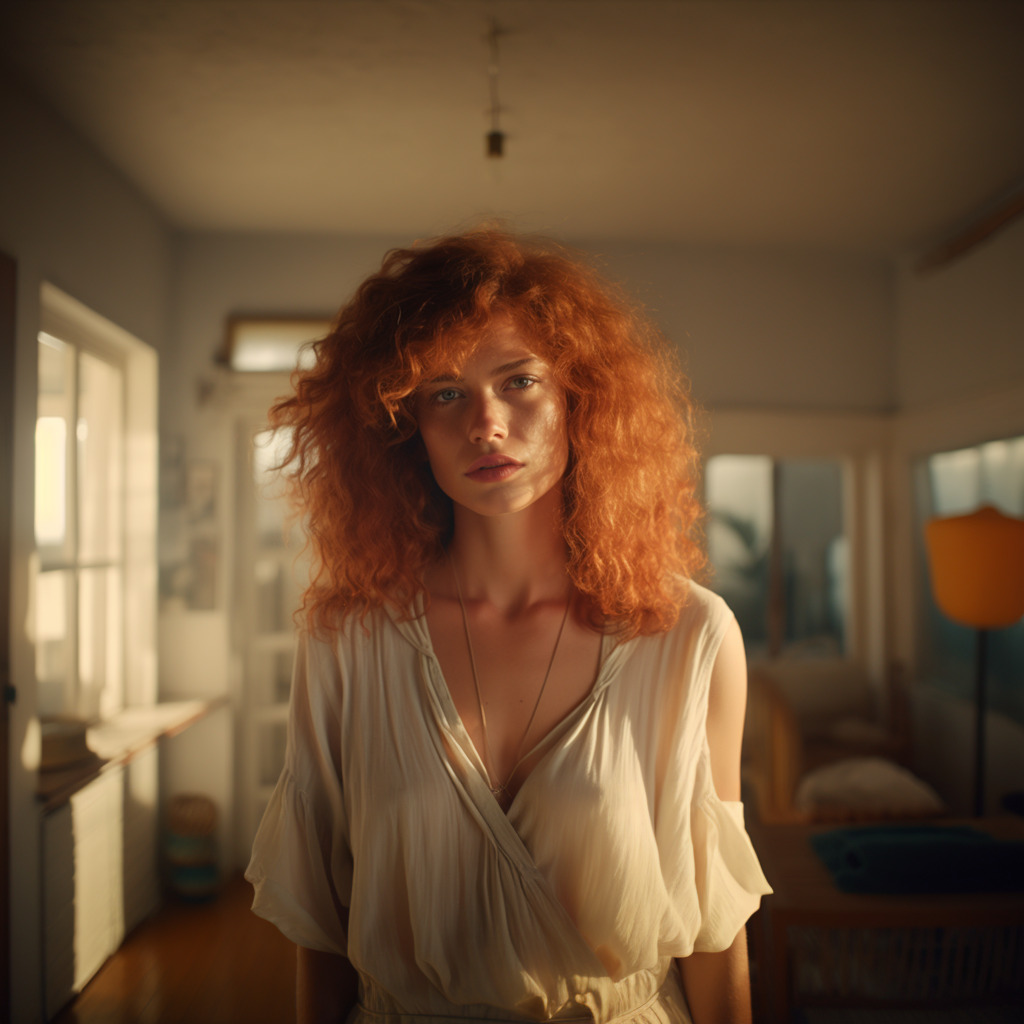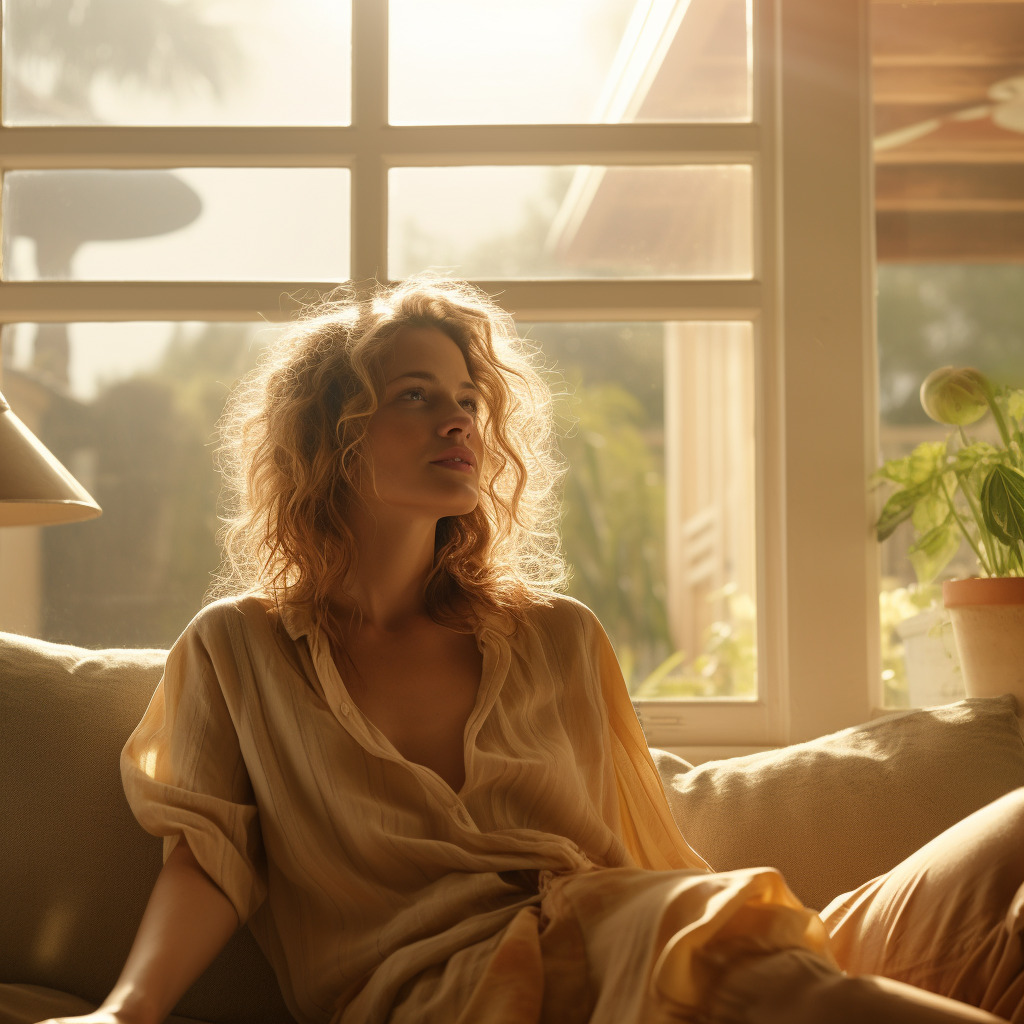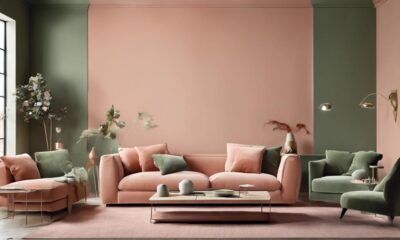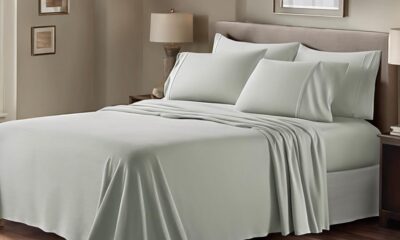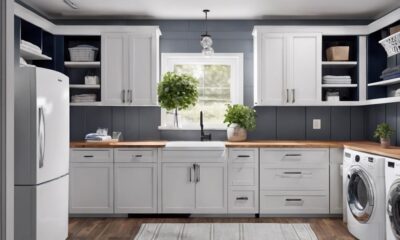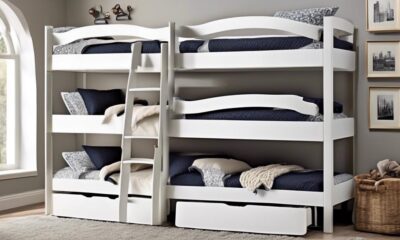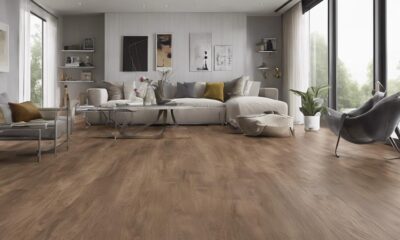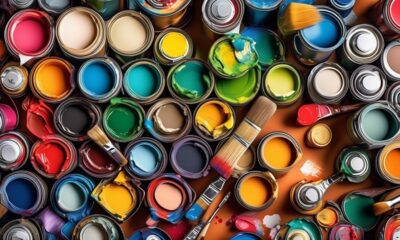Decor
Rhythm in Decor: Excellent Room Styling Examples
2025
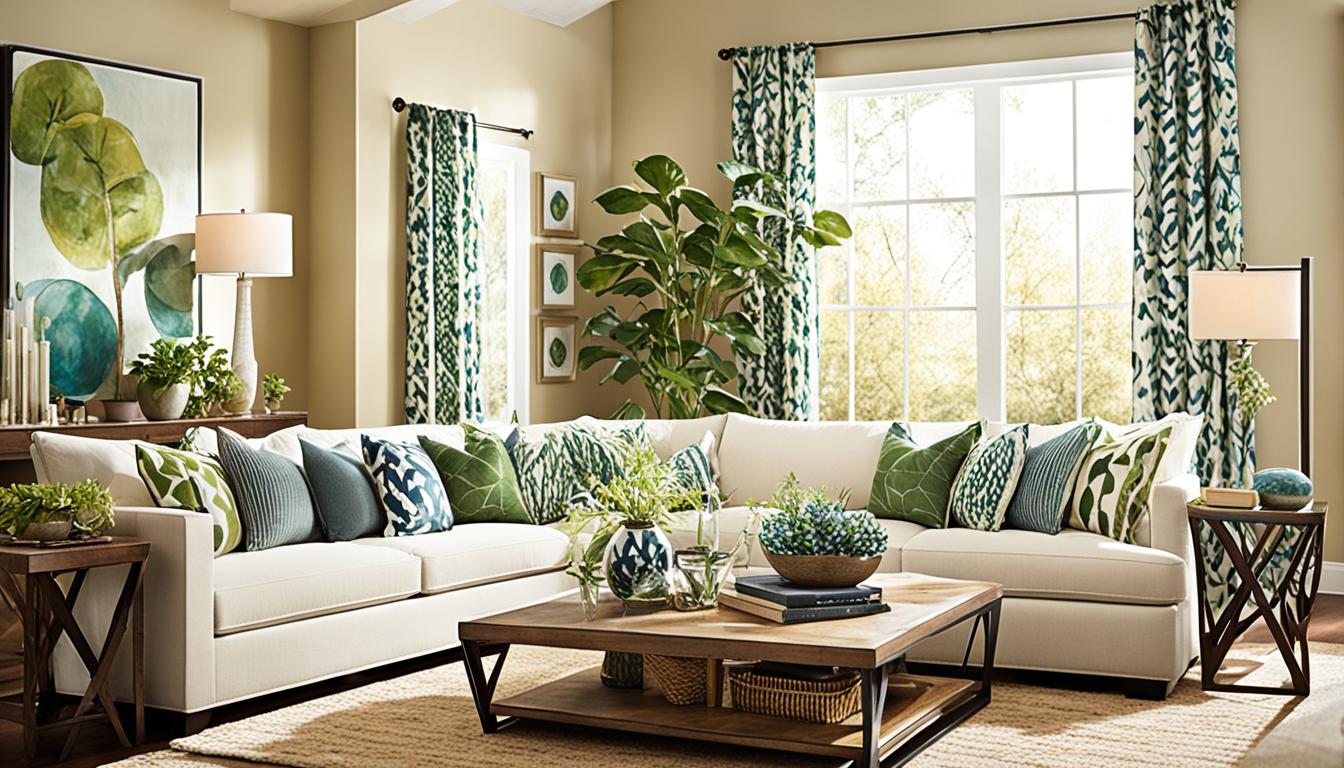
Have you ever entered a space and instantly experienced a feeling of tranquility and balance? The arrangement of furniture and decorations come together in a way that forms a visual harmony, calming your spirit. It’s like each component has been thoughtfully arranged to foster an ambiance that resonates with you. This is the essence of rhythm in room decor.
Rhythm is more than just a catchy beat or a melody that sticks with you. It’s a design principle that brings order and flow to a space, transforming it into a harmonious sanctuary. By repeating certain design elements throughout the room, a sense of continuity and balance is achieved. It’s like a dance, where every step is intentional and every movement has purpose.
Imagine stepping into a living room where the pattern on the rug echoes the lines on the ceiling, and the curves of the furniture mimic the shape of the windows. It’s a sight to behold, an experience that transcends the ordinary. This is rhythm in room decor.
In this article, we will explore the art of rhythm in interior design and discover how it can elevate your room styling. From finding a pattern worth repeating to creating contrast and achieving smooth transitions, we will delve into the techniques that design experts use to create breathtaking spaces.
So, are you ready to embark on a journey of rhythm and style? Let’s dive in and uncover the secrets of excellent room styling examples that will inspire and delight.
Key Takeaways:
- Rhythm in room decor brings order and flow to a space, creating a harmonious atmosphere.
- Repetition of design elements throughout the room creates continuity and balance.
- Finding a pattern worth repeating is the first step in creating rhythm in room decor.
- Contrast and smooth transitions add visual interest and enhance the overall rhythm of the space.
- Excellent room styling examples demonstrate how rhythm can elevate the design of a room.
Finding a Pattern in Rhythm
When creating rhythm in a room’s decor, it is important to find a pattern worth repeating. This not only adds visual interest but also creates a cohesive and harmonious environment. One way to identify a pattern is by observing the existing architectural features or design elements in the space. By finding a common thread, we can create a visual path that guides the eye and enhances the overall aesthetic.
For example, suppose your space has linear textures on plaster walls. In that case, you can draw inspiration from this pattern and incorporate it into your decor elements. A geometric rug with parallel and perpendicular lines can echo the linear textures on the walls, creating a calming yet visually stimulating rhythm in the room. Pair it with a graphic cabinet that showcases similar angular shapes and clean folds of drapery to maintain the consistency of the pattern.
This geometric rug not only adds texture to the floor but also becomes a focal point, drawing attention and creating a visually appealing atmosphere. Its pattern complements the linear textures on the walls, reinforcing the rhythm and creating a sense of harmony in the space.
Emphasizing the Visual Path
By finding a pattern and incorporating it into the room’s decor, we create a visual path that leads the eye throughout the space. The repetition of parallel and perpendicular lines in the rug and other elements creates a sense of order, guiding our gaze and creating a cohesive flow from one area to another. This seamless transition enhances the overall aesthetic and elevates the room’s design.
“By finding a pattern worth repeating, we can create a visually interesting rhythm that adds depth and character to the decor.”
Whether you choose a geometric rug or explore other design elements, finding a pattern allows us to create a visually captivating rhythm that enhances the overall aesthetic of the space. Keep in mind that the pattern should be visually appealing and complementary to the existing architectural features or design elements. By incorporating a pattern into your room’s decor, we can establish continuity, create a visual path, and infuse the space with a rhythmic energy that transforms it into a harmonious sanctuary.
Starting with Repetition
Repetition is a powerful technique that can bring rhythm to any interior design. By repeating design elements such as shapes, colors, textures, and patterns, you can create a sense of continuity and cohesiveness in your space. This repetition creates a visual flow that leads the eye from one element to another, creating stability and unity.
One way to incorporate repetition is through soft furnishings like cushions and rugs. Choose patterns or motifs that can be repeated throughout the room, whether it’s a geometric pattern or a floral design. You can also play with textures and colors to add depth and interest.
Additionally, permanent fixtures and architectural features present excellent opportunities for repetition. Consider elements like columns, arches, or ceiling details that can be repeated in different areas of the room. This repetition not only adds visual interest but also creates a harmonious environment.
To showcase the power of repetition in interior design, let’s take a look at some inspiring examples:
“Repetition is the key to creating a sense of rhythm and flow in interior design. By repeating design elements, we can create a visual language that guides the eye and creates a cohesive and inviting space.”
Example 1: Repeating Colors and Patterns
In this living room, repetition is used to create a harmonious color scheme and visual flow. The use of blue and white is repeated in the throw pillows, curtains, and artwork, creating a cohesive and inviting space. The geometric pattern on the rug is also echoed in the patterns of the cushions, adding depth and interest to the room.
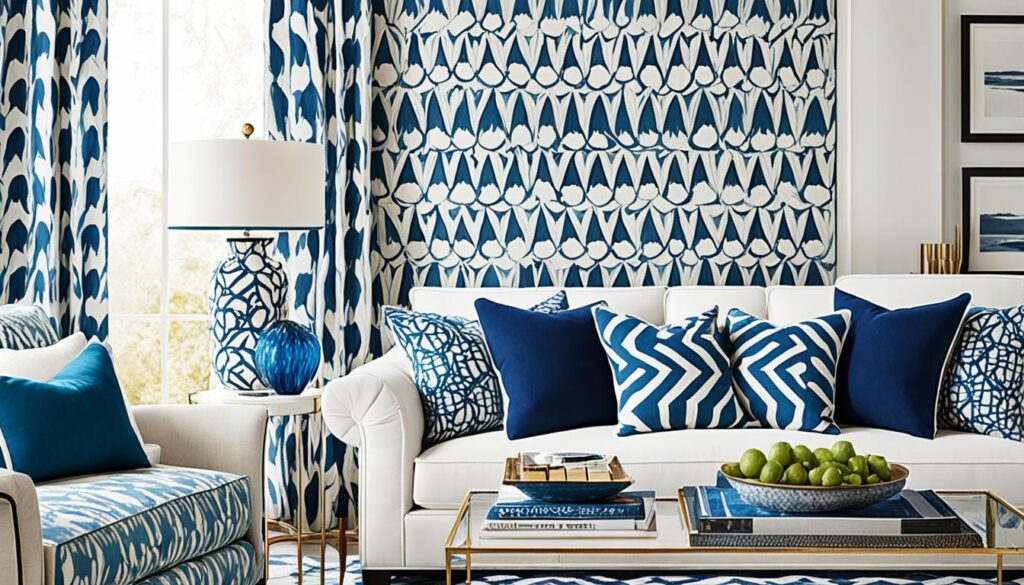
Example 2: Repeating Shapes and Textures
In this dining room, repetition is achieved through the use of circular shapes and textures. The round dining table is echoed in the shape of the pendant light and the rug. The textured wallpaper on the accent wall is repeated in the upholstery of the chairs, creating a sense of unity and visual interest.

By starting with repetition, you can create a solid foundation for rhythm in your interior design. Whether it’s through soft furnishings or architectural features, repetition brings stability and visual flow to your space. Let your creativity guide you as you explore the possibilities of repetition in your own home.
Changing Up Repetition for Asymmetry
To avoid a repetitive and monotonous design scheme, we need to switch up the pattern and create asymmetry in our interior design. By introducing similar yet refreshing elements that deviate slightly from the repetitive pattern, we can add visual interest and playfulness to the space.
In symmetrical living rooms, for example, we can place one or two furniture pieces slightly off-kilter. This subtle shift creates an asymmetrical balance that catches the eye and breaks the monotony of a strictly symmetrical layout. By doing so, we can bring a sense of energy and movement into the room.
Take a look at the illustration below to see how asymmetry can be introduced in a symmetrical living room: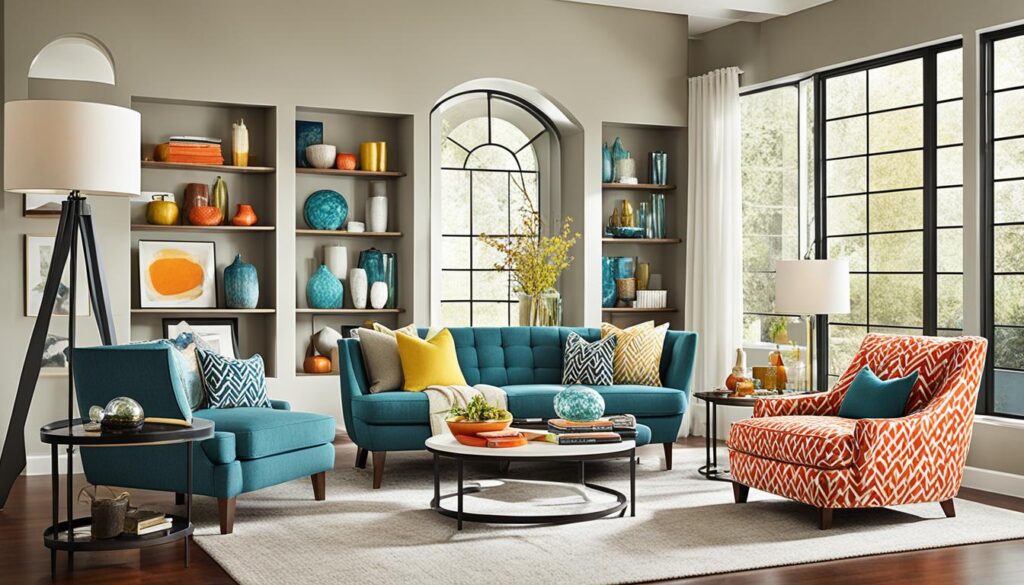
| Before | After | |
|---|---|---|
| Layout | Strictly symmetrical | Introducing asymmetry |
| Effect | Monotonous | Dynamic and playful |
By carefully selecting and placing furniture and decor, we can achieve a harmonious balance between symmetry and asymmetry. This balance adds depth and visual interest to the room, making it more engaging and inviting.
Next, we’ll explore the principle of radiation in design and how it can be used to create a focal point and organized movement in the space.
Achieving Radiation in Design
Radiation is a type of rhythm that revolves around a focal point in the room. By arranging furniture and decor in a way that creates a circular or radial movement around the center, we can achieve radiation in interior design. This technique adds visual interest and directs the eye throughout the space, resulting in a harmonious and organized environment.
One effective way to achieve radiation is to arrange chairs in a circular formation around a dining table. This not only creates an organized movement but also establishes a focal point in the room. The circular arrangement encourages conversation and creates an inviting atmosphere for gatherings.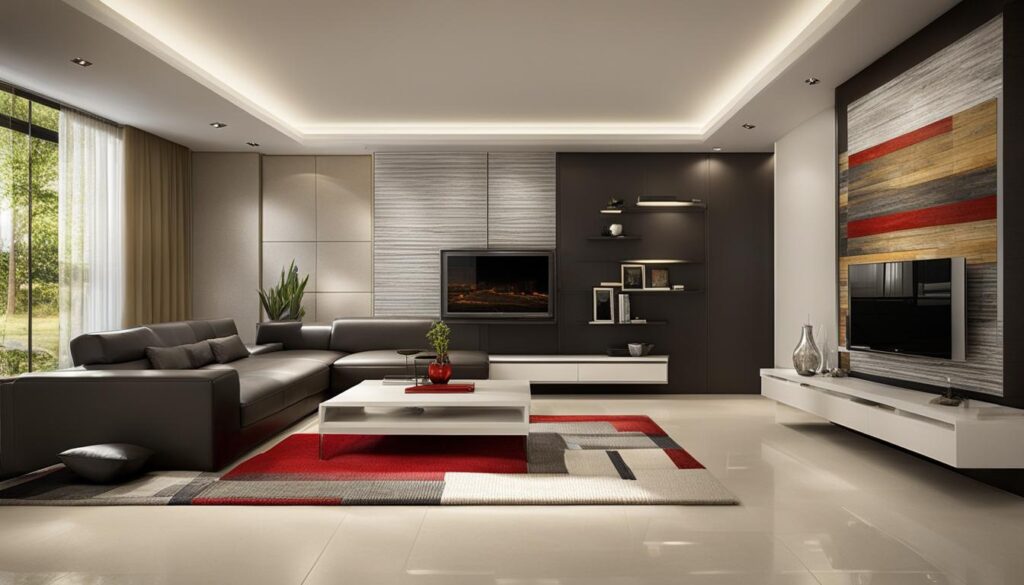
Another approach to radiation is to use decor elements such as mirrors or artwork arranged in a circular or radial pattern. This draws attention to a central point and enhances the overall visual flow of the space. Additionally, lighting fixtures with multiple arms or branches that radiate from a central base can also create a sense of organized movement.
When implementing radiation in design, it’s important to consider the scale and proportion of the space. The placement of furniture and decor should be balanced to avoid overwhelming the room or disrupting the flow. By carefully organizing the elements, we can achieve a cohesive and visually pleasing result.
Overall, radiation in interior design is a powerful technique that adds depth and dimension to a room. By creating a focal point and arranging furniture and decor in a circular or radial manner, we can achieve an organized movement that enhances the overall aesthetic. Incorporating radiation effectively contributes to a visually engaging and harmonious space.
Creating Contrast for Rhythm
Contrast is a key element in interior design that plays a pivotal role in creating rhythm. By strategically employing opposing colors, shapes, textures, and styles, we can achieve a visually captivating and harmonious rhythm within a space. The deliberate use of contrast adds depth, interest, and movement, engaging the eye and creating a dynamic pattern that keeps the space alive.
One effective way to introduce contrast is through the combination of organic and sharp lines. The juxtaposition of smooth, flowing curves with angular, geometric shapes creates an intriguing visual tension that draws attention and generates rhythm. This can be seen in the combination of a sleek curvilinear sofa with a structured, angular coffee table.
Another way to employ contrast is by using colors that are opposite on the color wheel. These complementary colors, such as blue and orange or green and red, create a vibrant and energetic rhythm. They evoke a sense of harmony while simultaneously stimulating the eye. For example, a blue accent wall can be paired with orange accessories to create a striking contrast and a lively rhythm.
Light and dark elements also contribute to contrast and rhythm in interior design. The interplay between light and shadow creates depth, highlighting the different elements within the space. By strategically placing light fixtures, using contrasting shades or colors, and incorporating reflective surfaces, we can emphasize the contrast and rhythm in the room.
Incorporating modern furnishings with traditional architectural details is another effective way to introduce contrast and rhythmic movement. This fusion of different styles creates an interesting dialogue and juxtaposition between old and new, resulting in a visually engaging and dynamic space. For instance, pairing a contemporary sofa with a vintage chandelier adds a touch of unexpected contrast and rhythm.
Textures can also be used to create contrast and add rhythm to an interior space. By mixing different textures, such as smooth and rough or soft and hard, we create tactile interest and visual depth. This can be achieved through the combination of materials like leather, velvet, wood, and metal. The interplay of these contrasting textures adds richness and rhythm to the space.
Below is a table summarizing the various elements that can be used to create contrast and rhythm in interior design:
| Elements | Examples |
|---|---|
| Colors | Opposing colors on the color wheel |
| Shapes | Organic shapes with sharp geometric shapes |
| Textures | Smooth and rough, soft and hard textures |
| Styles | Modern furnishings with traditional architectural details |
| Light and Dark | Contrasting shades and spotlighting |
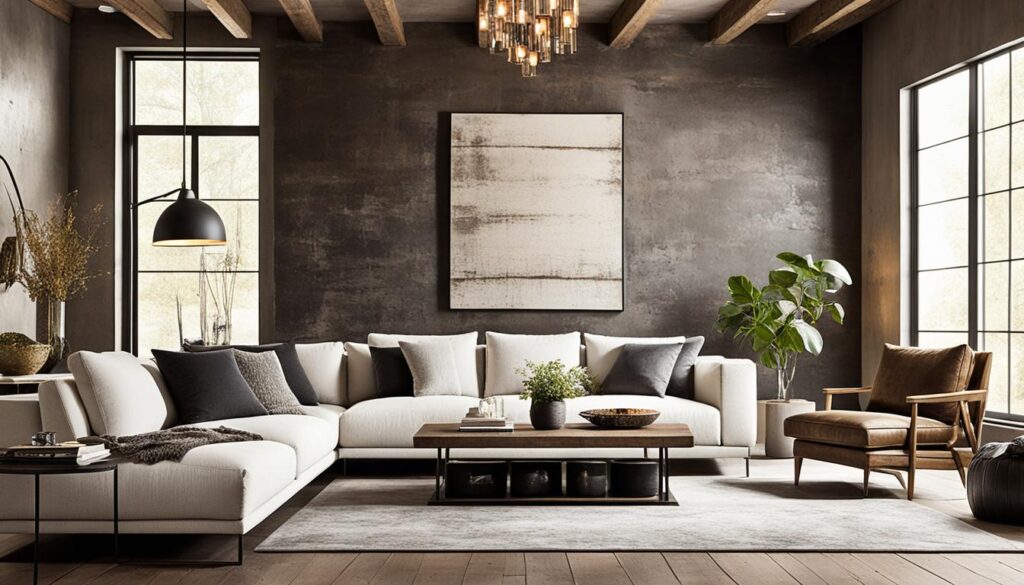
Achieving Alternation in Design
When it comes to creating rhythm in interior design, alternation is a powerful principle to consider. Alternation involves alternating two or more elements in a regular pattern, resulting in a visually engaging and rhythmic flow throughout the space. By repeating elements in a specific order, such as ABCABC or ABBABB, designers can add a sense of movement and variety to the room.
Alternation can be applied to various design elements, including colors, textures, shapes, or patterns. By strategically alternating these elements, a dynamic visual rhythm can be achieved, capturing attention and creating a unique atmosphere.
For example, in a living room, alternation can be utilized in the choice of throw pillows, alternating between different patterns or colors to create a lively and vibrant look. This not only adds visual interest but also creates a rhythm that draws the eye around the seating area.
Adding Alternation to Furniture Arrangement
Alternation can also be incorporated into the arrangement of furniture and decor. By alternating the placement of different-sized furniture pieces or decorative items, a well-balanced and visually appealing composition can be achieved.
“Alternation adds a sense of variety and playfulness to the space, making it more dynamic and interesting.”
For instance, in a dining room, alternating high-backed chairs with low-backed chairs around the table can create a visually pleasing contrast while maintaining a cohesive look. This alternation of chair heights adds rhythm to the space and enhances the overall dining experience.
Bringing Alternation to Light Fixtures
Light fixtures also offer an opportunity to incorporate alternation in design. By alternating different styles, shapes, or heights of light fixtures in a room, an intriguing visual pattern can be created while providing functional lighting.
Whether it’s a series of pendant lights above a kitchen island or a collection of table lamps in the living area, the alternation of light fixtures adds depth, rhythm, and character to the space.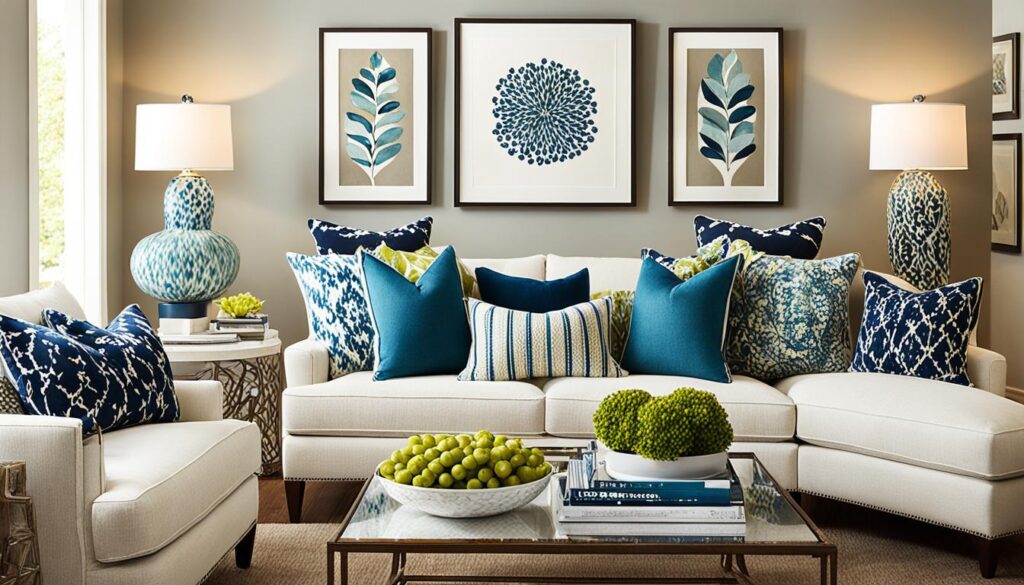
Incorporating alternation in interior design sparks creativity and adds a lively rhythm to the space. By strategically alternating elements and patterns, designers can achieve a visually dynamic environment that captivates and delights.
Transition and Flow in Design
Transition is a fundamental principle in interior design that contributes to the overall rhythm and flow of a space. It involves creating smooth movement and guiding the eye from one area to another seamlessly. By incorporating various design elements and architectural features, designers can achieve a harmonious transition that enhances the overall aesthetic and functionality of a room.
One way to achieve a smooth transition is through the use of curved furniture and curved walls. Curved furniture, such as a sectional sofa or a rounded coffee table, can soften the visual edges and create a sense of fluidity in the space. Curved walls, on the other hand, can visually connect different areas and provide a gentle transition from one room to another.
Architectural features like bow windows and indoor arches are also effective in creating a smooth flow. A bow window, with its graceful curvature, not only brings in natural light but also creates a seamless transition between the interior and exterior. Indoor arches, whether in doorways or between rooms, add architectural interest and serve as visual gateways, guiding the eye through the space.
Take a look at this image to see how a curved hallway adorned with artwork adds a smooth transition and flow to the overall design:
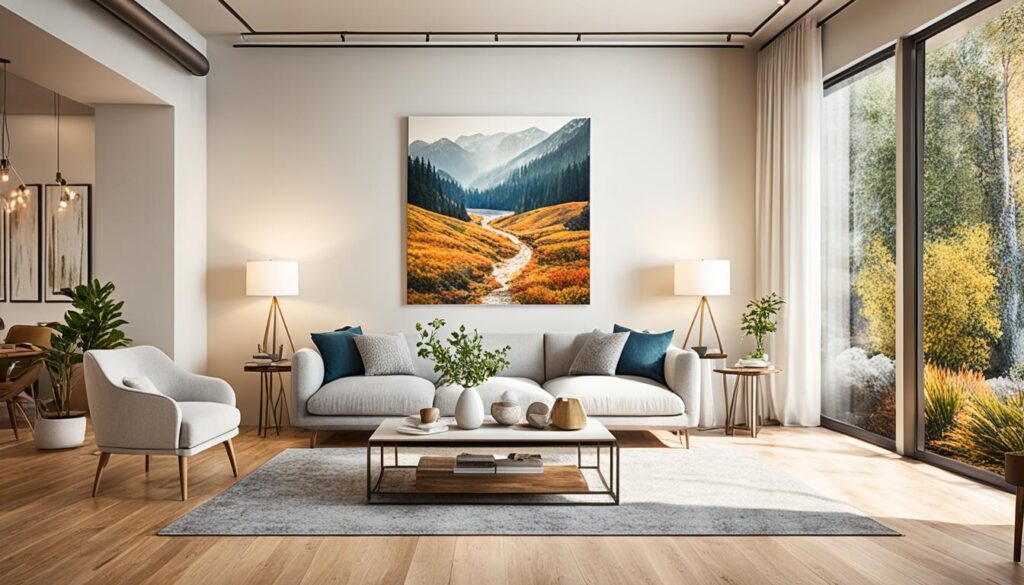
By strategically incorporating these curved elements into the design, the space becomes visually appealing, and the transition between different areas feels effortless, promoting a sense of continuity and harmony.
Gradation for Gradual Rhythm
In the world of interior design, achieving a sense of rhythm involves the skillful use of various principles and techniques. One such principle is gradation, which adds a gradual shift or progression of elements in a space. With gradation, you can guide the eye and create a subtle yet captivating rhythm that enhances the overall design.
Gradation can be achieved by carefully considering the scale or color of objects in your interior. One way to apply gradation is by varying the scale of objects from small to large. For example, you can start with smaller decorative accessories or furniture pieces and gradually increase their size as you move through the room. This progression in scale adds visual interest and creates a rhythm that captures attention.
Another way to incorporate gradation is through a shift in color. By strategically using colors that transition from light to dark, you can create a sense of depth and dimension in your space. This can be accomplished through the use of different shades and tones, such as gradually shifting from lighter pastels to deeper hues. The gradual change in color adds a layer of visual interest and contributes to the overall rhythm of the design.
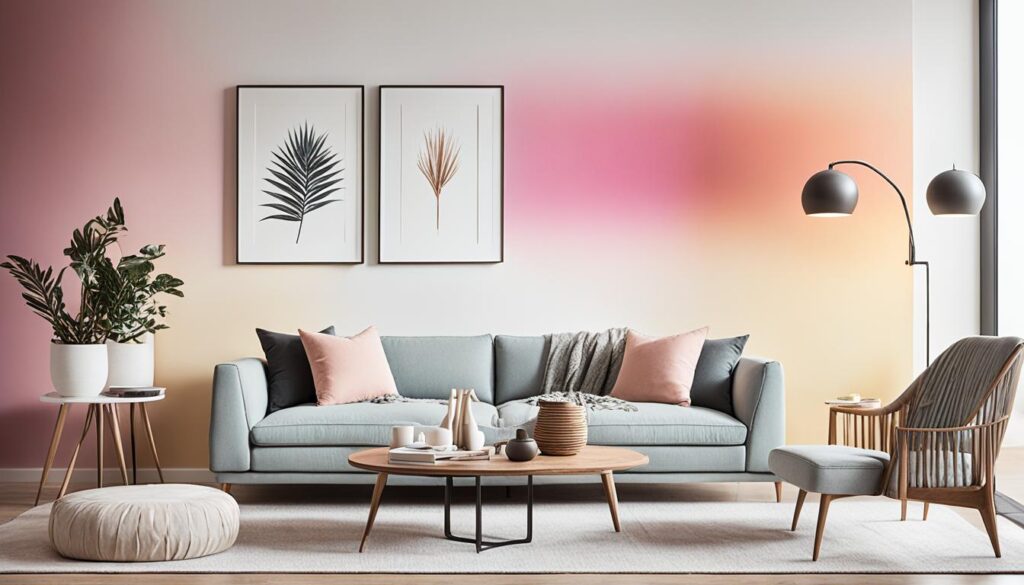
Whether it’s through the scale of objects or the progression of colors, gradation plays a vital role in interior design. It guides the eye up and down the space, creating a subtle rhythm that is both pleasing and captivating. Consider incorporating gradation into your design to add a sense of progression and flow to your interiors.
“Gradation adds a subtle and gradual rhythm, guiding the eye throughout the space.”
| Benefits of Gradation in Interior Design | Examples of Gradation Techniques |
|---|---|
|
|
Conclusion
Rhythm plays a vital role in interior design, effectively organizing space and creating a sense of flow and visual interest. By incorporating principles such as repetition, radiation, contrast, alternation, transition, and gradation, designers can achieve harmonious and captivating interiors.
Creating rhythm in decor starts with finding a pattern that can serve as a foundation. Utilizing repetition as a design technique helps to establish stability and visual continuity. Experimenting with different design elements and techniques adds movement and enhances the visual flow of the space.
When rhythm is applied effectively, it elevates room styling, resulting in a cohesive and pleasing environment. The use of rhythm in interior design transforms spaces into inviting havens that evoke a sense of balance and harmony. By consciously incorporating these principles, designers can evoke a memorable and impactful experience for their clients. I can definitely provide more examples of exploring rhythm in room decor examples. For instance, using matching patterns or repeating similar elements like colors or shapes can create a sense of rhythm in a room. Another example is using varied textures and sizes to add depth and movement to the space. Rhythm in interior design refers to the repetition of design elements throughout a space to create flow and visual interest. It involves organizing decor and furnishings in a way that creates continuity and order. Finding a pattern in rhythm involves looking at existing architectural features or design elements in the space and using them as inspiration. For example, a linear texture on plaster walls can inspire the use of geometric rugs, graphic cabinets, and clean folds of drapery in a dining room. Repetition is one of the easiest ways to achieve rhythm in interior design. By repeating design elements such as shapes, colors, textures, and patterns, continuity and cohesiveness can be achieved. This can be done through soft furnishings like cushions and rugs, as well as permanent fixtures like architectural features. To avoid a monotonous design scheme, it is important to switch up the pattern and create asymmetry. This can be done by introducing similar yet refreshing elements that deviate slightly from the repetitive pattern. For example, in a symmetrical living room, one or two furniture pieces can be placed slightly off-kilter to add visual interest and playfulness to the space. Radiation is a type of rhythm that revolves around a focal point in the room. It can be achieved by arranging furniture and decor in a way that creates a circular or radial movement around the center. For example, chairs can be arranged in a circular formation around a dining table, creating an organized movement and a focal point. Contrast is a powerful tool in creating rhythm. By using opposing colors, shapes, textures, and styles, a sense of rhythm can be achieved. This can be done through the combination of organic and sharp lines, colors that are opposite on the color wheel, light and dark elements, modern furnishings with traditional architectural details, and different textures. Alternation is a rhythm principle that involves alternating two or more elements in a regular pattern. This can be done by repeating elements in a specific order, such as ABCABC or ABBABB. Alternation adds visual interest and creates a rhythmic flow throughout the space. Transition is a rhythm principle that creates a smooth flow and leads the eye from one area of the room to another. This can be achieved through the use of curved furniture, curved walls, bow windows, and architectural features like indoor arches. Transition highlights a designated path and creates a fluid movement throughout the space. Gradation is a rhythm principle that involves creating a gradual shift or progression of elements in the space. This can be done by varying the scale of objects from small to large or by shifting colors from light to dark. Gradation guides the eye up and down the space, creating a subtle and gradual rhythm. Rhythm is a crucial aspect of interior design as it organizes the space and creates flow and visual interest. By incorporating principles such as repetition, radiation, contrast, alternation, transition, and gradation, designers can achieve harmonious interiors. Creating rhythm in decor involves finding a pattern, starting with repetition, and exploring different design techniques to add movement and visual flow to the space.Can You Provide More Examples of Excellent Room Styling with Rhythm?
FAQ
What is rhythm in interior design?
How can I find a pattern in rhythm for my room decor?
What is the importance of repetition in creating rhythm in interior design?
How can I create asymmetry while maintaining rhythm in my design scheme?
How can I achieve radiation in my room design?
What role does contrast play in creating rhythm in interior design?
How can alternation be used to create rhythm in interior design?
How can transition be incorporated into room design to create flow?
What is gradation and how can it contribute to rhythm in interior design?
How does rhythm enhance room styling in interior design?
- About the Author
- Latest Posts
Meet Katherine, the creative enthusiast at ByRetreat who infuses her boundless passion for design into every remote workspace she crafts. With an innate sense of creativity and an eye for unconventional beauty, Katherine brings a unique and inspiring perspective to the team.
Katherine’s love for design is infectious, and her ability to think outside the box sets her apart. She believes that true artistry lies in embracing a variety of styles and mixing them harmoniously to create captivating spaces. By combining different textures, colors, and patterns, Katherine weaves a tapestry of creativity that breathes life into each remote workspace.
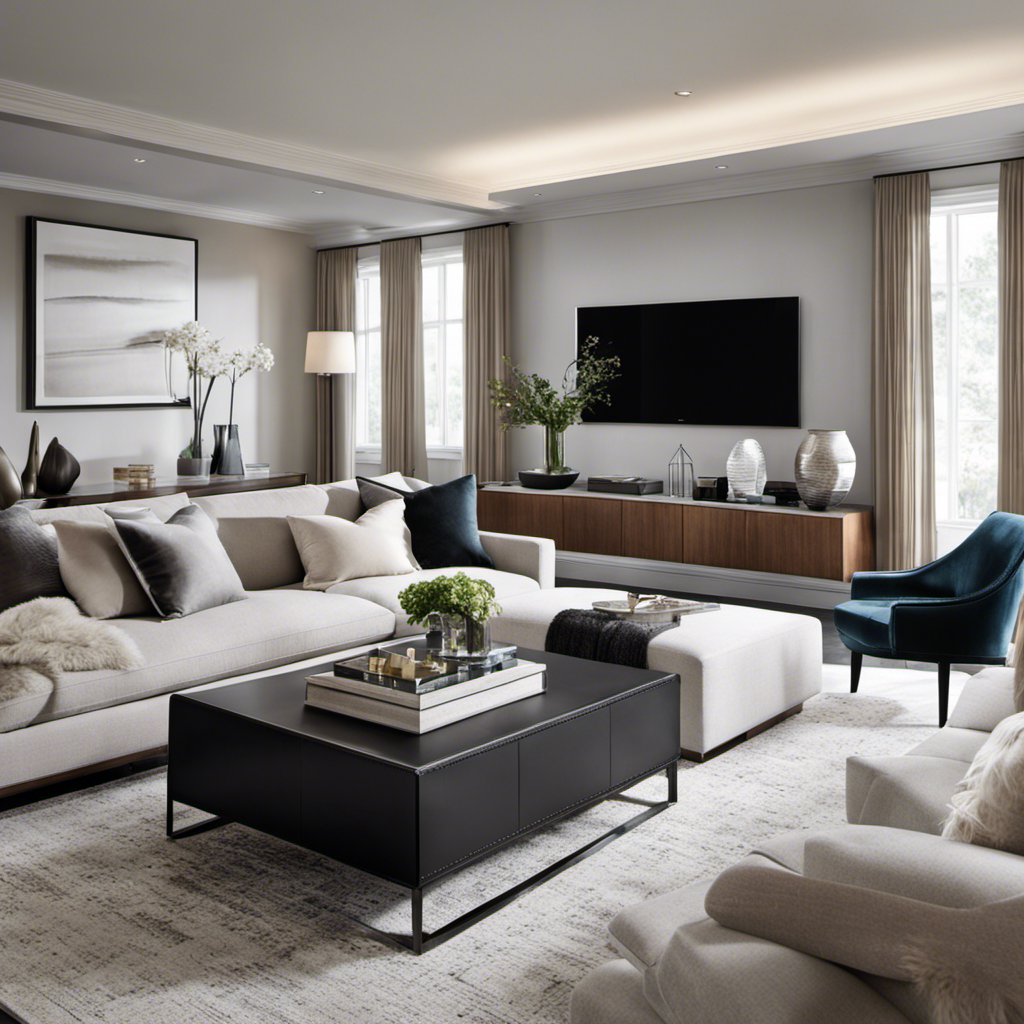
Picture entering a modern residence, where clean lines and vibrant colors intertwine harmoniously like a symphony.
In this article, we will explore the world of contemporary home decor and uncover its key characteristics, elements, and tips for incorporating it into your space.
From the choice of materials to the furniture and accessories, you’ll discover the secrets behind creating a modern and stylish sanctuary that reflects your unique taste and personality.
Get ready to infuse your home with a touch of contemporary elegance.
Key Takeaways
- Contemporary home decor is characterized by sleek lines, minimalism, and a focus on functionality.
- It incorporates technology and smart home features, as well as an emphasis on sustainability and the use of eco-friendly materials.
- Neutral color palettes and sleek materials create a calm and versatile backdrop for adding pops of color.
- Furniture and accessories in contemporary home decor feature clean lines and minimalist designs.
Characteristics of Contemporary Home Decor
You’ll love the sleek lines and minimalist aesthetic of contemporary home decor.
Contemporary design is heavily influenced by technology, with smart home features seamlessly integrated into the overall aesthetic. From automated lighting systems that adjust based on natural light levels to voice-controlled appliances, technology has made a significant impact on how we design and experience our homes.
Sustainability is also a key element in contemporary home decor. With a growing awareness of environmental issues, many homeowners are opting for eco-friendly materials and energy-efficient solutions. Recycled materials, low VOC paints, and energy-saving appliances are just a few examples of how sustainability is incorporated into contemporary design.
Transitioning into the next section, let’s explore the key elements that define contemporary home decor.
Key Elements of Contemporary Home Decor
To achieve a modern look in your living space, incorporate clean lines, minimalistic furniture, and neutral color palettes.
Clean lines: Contemporary design principles focus on simplicity and clarity. Straight and sleek lines create a sense of order and sophistication in your home.
Minimalistic furniture: Embrace a minimalist aesthetic by choosing furniture pieces that are sleek and functional. Avoid excessive ornamentation and opt for pieces with clean, simple shapes that prioritize functionality.
Neutral color palettes: Contemporary design often uses neutral colors such as white, gray, and beige as a backdrop. These shades create a calm and serene atmosphere, allowing other design elements to stand out.
Colors and Materials in Contemporary Home Decor
When choosing colors and materials for your modern living space, opt for neutral shades and sleek materials to create a clean and sophisticated atmosphere. Contemporary home decor often embraces a minimalistic approach, favoring simplicity and functionality.
Neutral color palettes, such as whites, grays, and beiges, serve as the foundation for this style, allowing for a calm and serene ambiance. These colors also provide a versatile backdrop for adding pops of color through accessories and artwork.
In terms of materials, sustainable options are gaining popularity in contemporary design. Bamboo, reclaimed wood, and recycled materials not only contribute to a more eco-friendly home, but they also add texture and visual interest to the space.
By incorporating these elements into your interior, you can create a modern and environmentally-conscious living environment.
Now let’s explore how furniture and accessories play a role in contemporary home decor.
Furniture and Accessories in Contemporary Home Decor
Choose furniture and accessories that feature clean lines and sleek designs to enhance the modern aesthetic of your living space. In contemporary home decor, furniture trends lean towards minimalism in design, focusing on simplicity and functionality. Here are three key pieces that can elevate your space to the next level:
-
A streamlined sofa: Opt for a sofa with clean, straight lines and a low-profile silhouette. Look for one in a neutral color, such as gray or beige, to maintain a minimalist vibe.
-
Minimalist lighting fixtures: Choose sleek and simple lighting fixtures that blend seamlessly with the overall design scheme. Pendant lights with geometric shapes or floor lamps with slender frames are great options.
-
Minimalistic coffee table: Select a coffee table with a minimalist design, featuring clean lines and a minimalist color palette. Look for one made of materials like glass, metal, or wood to add a touch of elegance to your living room.
Is Modern Boho Decor Considered a Subset of Contemporary Home Decor?
Yes, modern boho decor style is often considered a subset of contemporary home decor. This trendy design aesthetic combines elements of bohemian and modern decor, resulting in a stylish, eclectic, and laid-back vibe. With its mix of bold colors, textures, and natural materials, modern boho decor adds a fresh and unique touch to contemporary homes.
Tips for Incorporating Contemporary Home Decor in Your Space
To achieve a modern and stylish atmosphere in your living space, focus on incorporating clean lines, sleek designs, and minimalistic elements.
When it comes to artwork selection, opt for pieces that are contemporary and abstract, as they can add a touch of sophistication and intrigue to your decor. Look for artwork that features bold colors, geometric shapes, and unconventional compositions.
Lighting fixtures play a crucial role in creating a contemporary ambiance. Choose fixtures that have clean and simple designs, such as pendant lights with metallic finishes or floor lamps with sleek and minimalistic shapes. Pay attention to the type of light emitted as well, as soft and warm lighting can create a cozy and inviting atmosphere.
Frequently Asked Questions
What Is the History and Origins of Contemporary Home Decor?
Contemporary home decor has a rich history and fascinating origins. It has evolved over time, influenced by various design movements and cultural shifts. Let’s delve into the captivating story behind this popular interior style.
Are There Any Specific Cultural Influences on Contemporary Home Decor?
Contemporary home decor draws on various cultural influences, blending traditional elements with modern design. You’ll find touches of Asian minimalism, Scandinavian simplicity, and African patterns, creating a unique and eclectic style.
What Are Some Common Misconceptions About Contemporary Home Decor?
Common misconceptions about contemporary home decor include thinking it’s all about minimalism or cold aesthetics. In reality, it’s about blending modern and traditional elements, creating a warm and inviting space. Popular trends include mixing textures, bold colors, and statement pieces.
Can Contemporary Home Decor Be Combined With Other Design Styles?
Yes, you can combine contemporary home decor with other design styles. By blending contemporary elements with traditional pieces, or mixing contemporary decor with rustic design, you can create a unique and eclectic look for your home.
How Does Contemporary Home Decor Differ From Modern or Minimalist Design?
Contemporary home decor distinguishes itself from modern or minimalist design through its unique blend of traditional elements and incorporation of modern gadgets. Embrace the differences and let technology enhance the aesthetic appeal of your living space.
Conclusion
In the symphony of design, contemporary home decor dances to the beat of modernity. With clean lines and minimalist aesthetics, it paints a canvas of simplicity and sophistication. Like a skilled conductor, it harmonizes colors and materials, blending them seamlessly.
Furniture and accessories take center stage, showcasing sleek and functional designs. Embrace the rhythm of contemporary home decor and transform your space into a masterpiece of elegance and style.
Let the allegory of modernity guide you on this artistic journey.
- About the Author
- Latest Posts
Introducing Charles, the Editor in Chief at ByRetreat, whose passion for interior design and editorial excellence elevates every remote workspace to new heights. With his keen eye for detail, impeccable taste, and expertise in design, Charles brings a wealth of knowledge and creativity to the ByRetreat team.
As the Editor in Chief of a renowned lifestyle blog, Charles has honed his skills in curating captivating content and staying up-to-date with the latest trends in interior design. His deep understanding of aesthetics and the power of storytelling through design enables him to create remote workspaces that are not only visually stunning but also rich in personality and meaning.
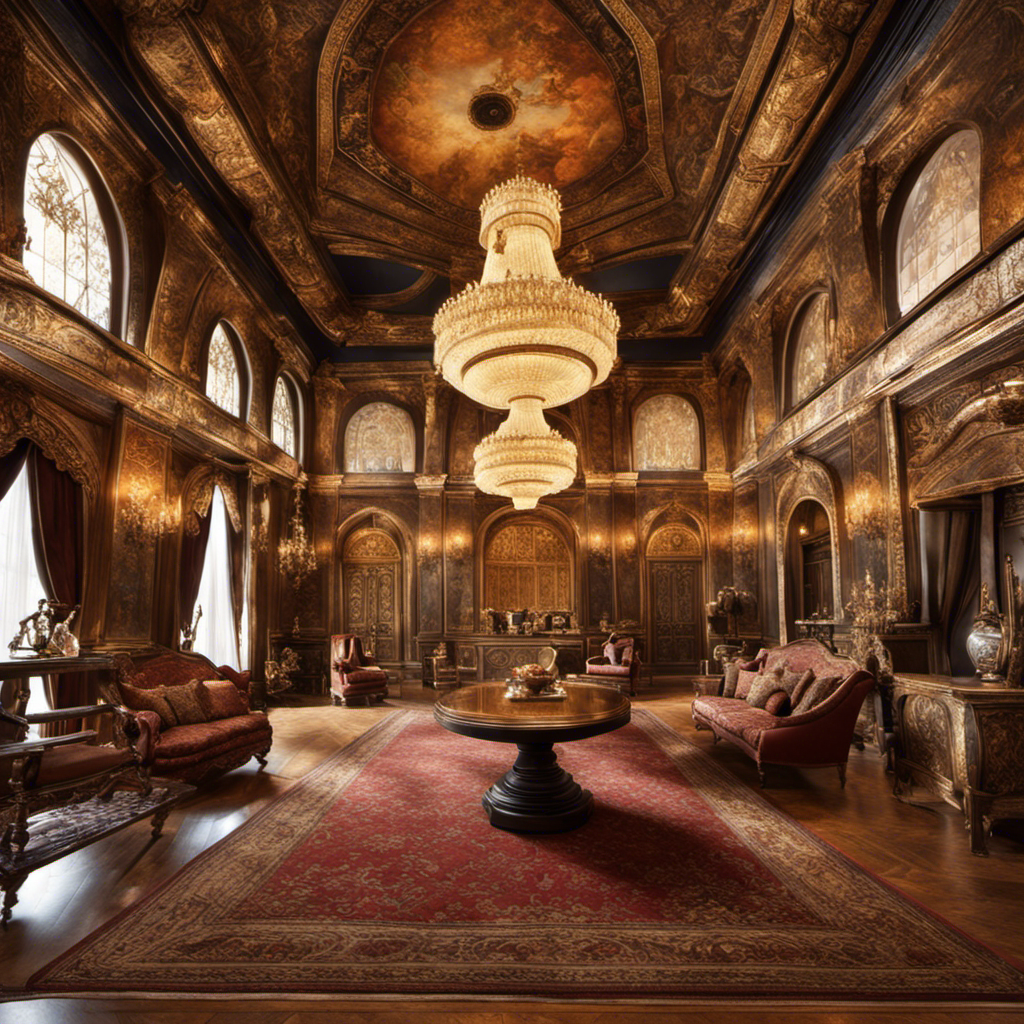
You’re in luck, buddy! Skyhold Decor is right around the corner, ready to turn your fortress into a stunning sanctuary. Come into a realm where merchants are eagerly waiting for you, providing a delightful selection of decorative treasures.
Crafters and gatherers will find their skills rewarded, as rare drops from defeated enemies can also be repurposed into stunning adornments. Quests will lead you to hidden gems, and don’t forget about the DLC and expansion packs, bursting with even more possibilities.
Your Skyhold will be the envy of all.
Key Takeaways
- Merchants in Skyhold, such as Alara’s Emporium and Banner Forge, offer unique handcrafted furniture pieces and customizable banners for displaying heraldry.
- Crafting and gathering resources in diverse environments, engaging with local wildlife, and mastering gathering professions like mining, herbalism, and skinning can enhance gameplay experience and unlock furniture customization possibilities.
- Defeating enemies can yield rare drops, and employing effective farming strategies or trading valuable resources with other players can increase the chances of obtaining rare drops.
- Quest rewards should be checked carefully for valuable items and resources, as some quests offer rare crafting materials, unique weapons, and gear that can greatly enhance the gameplay experience.
Merchants in Skyhold
You can find various merchants in Skyhold where you can purchase different types of decor for your keep.
One of the most popular merchants is Alara’s Emporium, located in the heart of the market square. They specialize in unique furniture pieces that are handcrafted by skilled artisans from all over the realm. From ornate dining tables to exquisite bedroom sets, they’ve everything you need to make your keep truly one-of-a-kind.
Another merchant to check out is Banner Forge, situated near the training grounds. They offer a wide selection of customizable banners, allowing you to proudly display your heraldry and unite your followers under a common symbol.
Whether you’re looking for elegant furniture or personalized banners, the merchants of Skyhold have you covered.
Crafting and Gathering
To find crafting materials and gather resources, check out the various regions and zones in the game. There are countless opportunities for resource farming that will enhance your gameplay experience and unlock new possibilities for furniture customization.
Here are some tips to help you make the most of your crafting and gathering adventures:
-
Explore diverse environments: Venture into lush forests, treacherous mountains, and mysterious caves. Each region offers a unique array of resources waiting to be discovered.
-
Engage with the local wildlife: Animals can be a valuable source of materials. Hunt beasts for their hides, bones, and other valuable components.
-
Master gathering professions: Develop skills in gathering professions such as mining, herbalism, and skinning. By honing these abilities, you’ll be able to collect rare resources and create exquisite furniture pieces.
By embracing the art of resource farming and furniture customization, you’ll create a world that reflects your creative vision and showcases your unique style.
Rare Drops From Enemies
Defeating enemies in combat can sometimes yield rare drops that are highly sought after by players. These valuable items can provide a significant advantage or fetch a high price in the trading market.
To increase your chances of obtaining these rare drops, it’s essential to employ effective farming strategies. This entails identifying the enemies that are known to drop the desired items and repeatedly engaging them in combat. By focusing your efforts on these specific enemies, you maximize your chances of obtaining the rare drops you seek.
Once you’ve acquired these coveted items, trading opportunities abound. Other players may be in search of these rare drops and are willing to trade valuable resources or currency in exchange for them. By leveraging your knowledge of the market and the rarity of these items, you can negotiate favorable trades that enhance your own progression in the game.
Quest Rewards
When completing quests, be sure to check the rewards carefully for valuable items and resources. Quest rewards can often be overlooked, but they can hold valuable treasures that can greatly enhance your gameplay experience.
Here are some alternative methods and hidden treasures that you should be on the lookout for:
-
Rare Crafting Materials – Some quests offer rare crafting materials that can be used to create powerful weapons and armor. These materials are often hard to come by through other means, making them highly sought after by players.
-
Unique Weapons and Gear – Certain quests can reward you with unique weapons and gear that can’t be obtained through regular gameplay. These items often come with special abilities or stat bonuses, giving you an edge in battles.
Do they sell Skyhold Decor at Floor and Decor Arlington now?
Are you curious about the floor and decor Arlington history? Do they sell Skyhold decor at Floor and Decor Arlington now? It’s worth exploring the history of this beloved store while checking out their latest offerings. Discover the perfect Skyhold decor to elevate your space at Floor and Decor Arlington.
DLC and Expansion Packs
Make sure you check out the new DLC and expansion packs available, as they offer exciting new content and features that can enhance your gameplay experience.
One of the highlights of these updates is the addition of additional Skyhold customization options. Now, you’ve more choices when it comes to decorating your stronghold and making it truly your own. From new furniture pieces to unique wall paintings, the options are vast and diverse.
But here’s the best part: you can unlock special Skyhold decorations through gameplay achievements. By completing certain quests, defeating challenging enemies, or reaching specific milestones, you can earn these exclusive decorations that will make your Skyhold stand out from the rest.
Frequently Asked Questions
Can I Get Skyhold Decor From Completing Specific Achievements or Challenges?
Yes, you can obtain Skyhold decor by completing quests or missions. Additionally, you can purchase Skyhold decor from in-game vendors or shops. These options allow you to customize and enhance your Skyhold experience.
Are There Any Special Events or Limited-Time Promotions Where I Can Obtain Unique Skyhold Decor?
To obtain unique Skyhold decor, keep an eye out for special events or limited-time promotions. These can offer popular items that allow you to customize your Skyhold decor according to your personal style.
Can I Trade or Sell Skyhold Decor Items With Other Players?
Yes, you can trade or sell skyhold decor items with other players, but there are limitations. Some rare decor items hold higher value in the player market, making them valuable commodities worth considering in your trades.
Are There Any Hidden or Secret Locations in Skyhold Where I Can Find Rare and Exclusive Decor Items?
Hidden in the depths of Skyhold lie secret locations brimming with rare and exclusive decor items. Uncover these hidden gems to adorn your stronghold with a touch of mystique and elegance.
Can I Obtain Skyhold Decor by Participating in Player-Versus-Player Activities or Tournaments?
You can earn Skyhold decor by participating in player-versus-player activities or tournaments. This is a great way to obtain unique and rare items without having to rely on achievements or challenges.
Conclusion
As you gaze upon the magnificent decor adorning the walls of Skyhold, you can’t help but feel a sense of accomplishment.
Each piece tells a story, a symbol of your journey and triumphs. Whether it be from the local merchants, the fruits of your own crafting and gathering, rare drops from defeated foes, or even as rewards for completing quests, every item holds a deeper meaning.
They’re the embodiment of your growth, your strength, and the mark you’ve left on this world.
- About the Author
- Latest Posts
Meet Bethia, the visionary designer at ByRetreat who brings a touch of magic to every remote workspace she creates. With a boundless imagination and an eye for beauty, Bethia is passionate about transforming ordinary spaces into extraordinary havens of creativity and comfort.
Bethia possesses a unique talent for envisioning the perfect combination of furniture, colors, and textures that harmonize seamlessly in a room. She understands that selecting furniture goes beyond mere functionality; it’s about curating pieces that evoke a sense of style and sophistication while enhancing the overall ambiance.
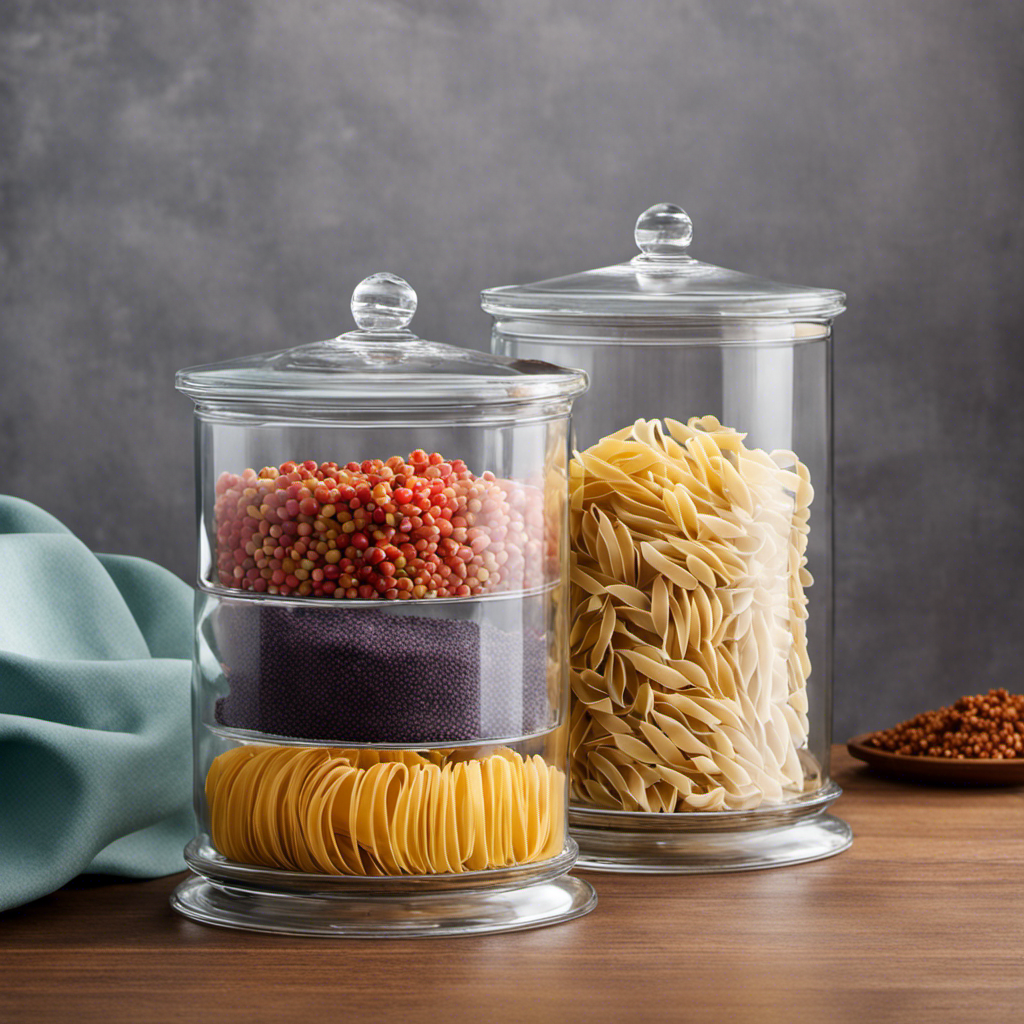
Hey everyone! Have you ever faced difficulties in enhancing your kitchen decor? Don’t worry, because I have some great ideas on what to put in those clear canisters. Believe me, it will make a big difference.
From fresh herbs and spices to colorful dry pasta, and even assorted baking supplies, the options are endless.
Oh, and let’s not forget about dried fruits and nuts, or the heavenly aroma of coffee beans and tea leaves.
Get ready to transform your kitchen into a stylish and functional space!
Key Takeaways
- Fresh herbs and spices bring freshness and vitality to the kitchen
- Colorful dry pasta adds pop of color and personality to the kitchen
- Organized baking supplies save time and add elegance to the kitchen
- Coffee beans and tea leaves in clear canisters add elegance and aroma to the kitchen
Fresh Herbs and Spices
I love filling clear canisters with fresh herbs and spices to add a burst of flavor and color to my kitchen decor.
One of my favorite ways to incorporate herbs into my kitchen is by creating an indoor herb garden. It not only adds a touch of greenery but also provides me with a convenient source of fresh herbs for cooking.
I enjoy the process of selecting different herbs like basil, rosemary, and thyme, and nurturing them as they grow. Not only do they enhance the aroma and taste of my dishes, but they also bring a sense of freshness and vitality to my kitchen.
Additionally, I enjoy experimenting with DIY spice blends. By combining different spices like cumin, paprika, and garlic powder, I can create unique flavors that perfectly complement my culinary creations. Having these spice blends readily available in clear canisters not only adds a decorative touch to my kitchen but also makes it easy for me to access and use them while cooking.
Colorful Dry Pasta
My favorite way to spruce up my kitchen is by using colorful dry pasta as a vibrant and eye-catching decorative element in my home. Not only does it add a pop of color, but it also brings a touch of whimsy and personality to my kitchen decor.
Here are some ideas to inspire you:
-
Different Shaped Pasta: From bowties to spirals, there are so many unique and interesting pasta shapes available. Mix and match them to create a visually appealing display in your clear canisters.
-
Vintage Kitchen Utensils: Pair your colorful dry pasta with vintage kitchen utensils to create a charming and nostalgic vibe. Hang old whisks, spatulas, and ladles on the wall or display them in a jar alongside the pasta.
-
Layered Pasta: Create layers of different colored pasta in your canisters for a stunning visual effect. This is a simple yet effective way to add depth and dimension to your kitchen decor.
Assorted Baking Supplies
One way to organize my assorted baking supplies is by using labeled containers to easily identify and access the ingredients and tools I need.
For my decorative sprinkles, I’ve a clear glass jar that showcases the vibrant colors and textures. It adds a pop of excitement to my kitchen decor, while also keeping my sprinkles fresh and easily accessible.
Another container I use is a small plastic bin for my cookie cutters. I label it ‘Cookie Cutters’ and place it on a shelf within reach. This way, whenever I’m in the mood for baking cookies, I can quickly find the perfect shape without rummaging through drawers.
Organizing my baking supplies in this way not only saves me time but also adds a touch of elegance to my kitchen.
Dried Fruits and Nuts
To keep my dried fruits and nuts fresh, I store them in airtight containers. Not only do dried fruits and nuts add a burst of flavor and texture to any dish, but they also come with numerous health benefits.
Here are some reasons why you should incorporate them into your diet:
- Boost of nutrients: Dried fruits and nuts are packed with essential vitamins, minerals, and antioxidants that promote overall well-being.
- Energy-packed snacks: Whether you’re on-the-go or need a pick-me-up during the day, dried fruits and nuts provide a quick and nutritious energy boost.
- Versatile ingredients: Get creative in the kitchen by using dried fruits and nuts in a variety of recipes, from salads and baked goods to savory dishes like stir-fries and pilafs.
Coffee Beans and Tea Leaves
I love the aroma of freshly ground coffee beans and the soothing taste of steeped tea leaves. There’s something magical about starting the day with a cup of freshly brewed coffee or a fragrant cup of tea.
When it comes to kitchen decor, clear canisters filled with coffee beans and loose leaf tea are a perfect choice. Not only do they add a touch of elegance to the kitchen, but they also serve a practical purpose. The rich, earthy scent of coffee beans fills the air, creating a warm and inviting atmosphere.
The canisters can be arranged on a countertop or displayed on a shelf, allowing you to showcase your favorite blends. To enhance the visual appeal, you can also add a few sprigs of aromatic herbs like lavender or mint to the canisters. This not only adds a pop of color but also infuses a subtle herbal fragrance into the air.
Frequently Asked Questions
How Can I Properly Store Fresh Herbs and Spices to Maintain Their Freshness and Flavor?
To properly store herbs and spices for freshness, I recommend using clear canisters. This allows you to easily see and access your collection. Ensure they are tightly sealed to maintain flavor and store in a cool, dry place away from sunlight.
What Are Some Creative Ways to Display Colorful Dry Pasta in Clear Canisters?
I love finding creative ways to display colorful dry pasta in clear canisters. It’s a great way to add a pop of color to my kitchen decor. I also enjoy showcasing fresh flowers and colorful candy for a fun and vibrant look.
How Should I Organize and Store Assorted Baking Supplies in Clear Canisters for Easy Access?
I love using clear canisters to organize and store my assorted baking supplies. It’s a great way to keep everything easily accessible. I also have some ideas for organizing small kitchen appliances and tips for storing bulk grains and flours.
Can I Store Dried Fruits and Nuts Together in the Same Clear Canister or Should They Be Stored Separately?
Storing dried fruits and nuts together in a clear canister can be convenient, but it may affect their flavors and textures. Separating them ensures freshness and prevents cross-contamination.
What Are Some Tips for Selecting and Storing Coffee Beans and Tea Leaves in Clear Canisters to Preserve Their Flavor and Aroma?
When it comes to selecting canister sizes for coffee beans and tea leaves, it’s important to consider the quantity you typically use. To preserve their flavor and aroma, clean and maintain clear canisters regularly.
Can Clear Canisters Be Used to Display Christmas Decorations in the Kitchen?
Yes, clear canisters can beautifully showcase Christmas decorations for kitchen. Fill them with festive items like colorful cookie cutters, candy canes, mini ornaments, or cinnamon sticks. The transparent containers allow you to create a visually appealing holiday display while keeping your kitchen organized and festive.
Conclusion
In conclusion, filling clear canisters with various ingredients not only adds a decorative touch to your kitchen but also serves a practical purpose.
From fragrant herbs and spices to vibrant pasta and versatile baking supplies, the options are endless.
Don’t forget to include dried fruits and nuts for a healthy snack option, and coffee beans or tea leaves for a delightful caffeine fix.
Remember, the world is your oyster when it comes to kitchen decor, so let your creativity run wild!
- About the Author
- Latest Posts
Meet Bethia, the visionary designer at ByRetreat who brings a touch of magic to every remote workspace she creates. With a boundless imagination and an eye for beauty, Bethia is passionate about transforming ordinary spaces into extraordinary havens of creativity and comfort.
Bethia possesses a unique talent for envisioning the perfect combination of furniture, colors, and textures that harmonize seamlessly in a room. She understands that selecting furniture goes beyond mere functionality; it’s about curating pieces that evoke a sense of style and sophistication while enhancing the overall ambiance.
-

 Decor2 weeks ago
Decor2 weeks agoMaximalist Decor Explained: Embrace More Style
-

 Vetted2 weeks ago
Vetted2 weeks ago15 Best Foot Massagers for Neuropathy to Soothe Your Feet and Relieve Discomfort
-

 Vetted3 weeks ago
Vetted3 weeks ago15 Best Sports Laundry Detergents for Keeping Your Activewear Fresh and Clean
-

 Vetted3 weeks ago
Vetted3 weeks ago15 Best Tall Toilets for Seniors That Combine Comfort and Safety
-

 Vetted4 weeks ago
Vetted4 weeks ago15 Best Dish Scrubbers to Keep Your Kitchen Sparkling Clean
-

 Vetted3 days ago
Vetted3 days ago15 Best Cleaners for Fiberglass Showers to Keep Your Bathroom Sparkling Clean
-

 Decor4 weeks ago
Decor4 weeks agoWhat Is Eclectic Home Decor
-

 Vetted1 week ago
Vetted1 week ago15 Best Organic Pest Control Solutions for a Naturally Pest-Free Home


